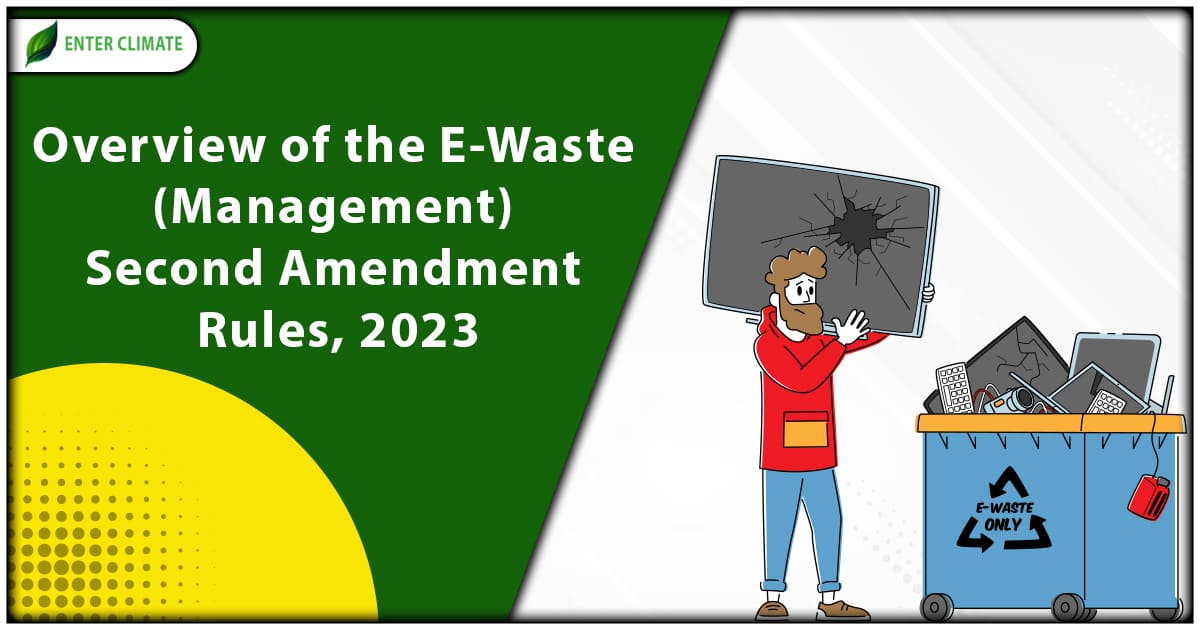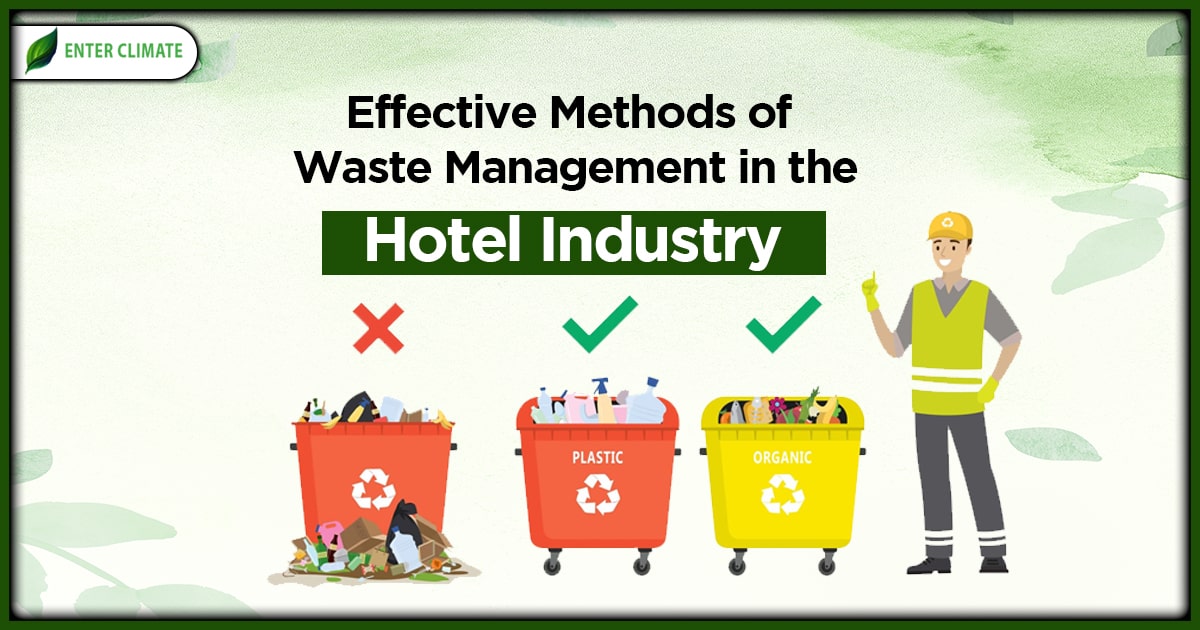Overview of the E-Waste (Management) Second Amendment Rules, 2023
 03 Aug, 2023
03 Aug, 2023 
The Ministry of Environment, Forest (MoEFCC) has introduced the E-Waste (Management) Second Amendment Rules of 2023, which were officially issued on 30th January, 2023. These amendment rules aim to modify the existing E-Waste (Management) Rules of 2022[1].Under the new amendment, all producers must furnish detailed information about the constituents of their equipment, as well as their components, consumables, parts, or spares. They must also declare their compliance with the reduction of hazardous substances provisions, as and when requested by the Central Pollution Control Board (CPCB). Previously, this detailed information was mandated to be included in the product user documentation. However, with this amendment, the requirement to include such information in the documentation has been eliminated, and producers must provide it only upon request from the CPCB.Additionally, the amendment introduces two new substances to the list of exemptions in Schedule II of the E-Waste (Management) Rules, 2022. These substances are cadmium and lead in Solar panels/cells, solar Photovoltaic panels/cells/modules, and Lead in Medical Devices, excluding all implanted and infected products.
What is E-Waste?
E-waste refers to electrical and electronic equipment (EEE), either in its entirety or in part, that is discarded as waste by consumers, bulk consumers, or as rejects from manufacturing, refurbishment, and repair processes. Waste electrical and electronic items are commonly known as e-waste. Improper disposal or careless recycling of such wastes can harm health and the environment, making it necessary to regulate e-waste.
E-waste, including items like Refrigerators, Televisions, LEDs, LCDs, Washing Machines, Computers, Laptops, Printers, etc., as listed in Schedule-I, are not hazardous waste in themselves. However, the presence of hazardous constituents in e-waste makes them hazardous when they are dismantled and processed, as it is during this stage that they become a threat to both health and the environment.
Essential Factors in the E-Waste (Management) Second Amendment Rules
The government has taken several measures to address the challenges associated with E-Waste. These steps are outlined below:
i. Applicability of the new are as follows:
- Applicability to all manufacturers, producers, refurbishers, dismantlers, and recyclers.
- Mandatory registration of all manufacturers, producers, refurbishers, and recyclers on a portal developed by CPCB (Central Pollution Control Board).
- Entities without registration are prohibited from conducting any business and cannot deal with any unregistered entity.
- The previous authorisation process is replaced by online registration, and only manufacturers, producers, refurbishers, and recyclers need to be registered.
- Schedule I has been expanded, now encompassing 106 Electrical and Electronic Equipment (EEE) under the EPR regime.
- Producers of notified EEE are assigned annual E-Waste Recycling targets based on their previous EEE sales or generation, with targets starting at 60% for 2023-2024 and 2024-2025, 70% for 2025-2026 and 2026-2027, and 80% for 2027-2028 and onwards.
- Management of solar PV modules/panels/cells has been incorporated into the new rules.
ii. The quantity of e-waste recycled will be calculated based on the end products, ensuring accuracy and preventing false claims.
iii. A provision has been introduced for the generation and transaction of EPR Certificates.
iv. The rules now include provisions for environmental compensation, verification, and audit processes.
v. A Steering Committee will be constituted to oversee the overall implementation of these rules.
These measures demonstrate the government’s commitment to addressing the challenges posed by E-Waste and promoting responsible e-waste management practices in the country.
E-Waste (Management) Second Amendment Rules, 2023:
The amendments as per E-Waste (Management) Second Amendment Rules are as follows:
- The amendment to Rule 5 ensures the implementation of approved destruction technologies for managing refrigerants generated during refrigeration and air-conditioning equipment production. This measure aims to improve the sustainable management of such waste materials.
- Rule 7 has been revised to make it compulsory for the secure, accountable, and sustainable management of refrigerants from end-of-life refrigeration and air-conditioning equipment. Adherence to CPCB guidelines and the use of approved destruction technologies will be crucial in achieving this objective.
- Rule 9 now emphasises the secure and sustainable management of refrigerants from end-of-life refrigeration and air-conditioning equipment. Compliance with the prescribed approved destruction technologies by the CPCB will play a pivotal role in ensuring the proper management of these refrigerants.
- The amendment to Rule 14 addresses the issuance of extended producer responsibility certificates for various end products resulting from recycling. The conversion factor for these certificates will be determined by CPCB guidelines, subject to the approval of the Steering Committee.
- Rule 16 has undergone significant changes to introduce specific electrical and electronic equipment exemptions. It also establishes timelines during which certain provisions may not apply, based on the equipment’s market placement date and the availability of reduced hazardous substances-compliant parts and spares.
- The E-Waste (Management) Second Amendment Rules of 2023 introduce three new schedules – Schedule II A, Schedule II B, and Schedule II C. These schedules provide detailed categories of electrical and electronic equipment, their components, consumables, parts, and spares, along with their exemptions as per the rules.
Categories of equipment as per the E-Waste (Management) Second Amendment Rules
Equipment utilising or detecting ionising radiation:
- Detectors for ionising radiation containing lead, cadmium, and mercury.
- X-ray tubes with lead bearings.
- Electromagnetic radiation amplification devices (containing lead.
- Lead is present in the glass frit of X-ray tubes, image intensifiers, and glass frit binder to assemble gas lasers and vacuum tubes that convert electromagnetic radiation into electrons.
- Lead is used in shielding for ionising radiation.
- X-ray test objects made with lead.
- X-ray diffraction crystals containing lead stearate.
- Radioactive cadmium isotope source found in portable X-ray fluorescence spectrometers. Sensors, detectors, and electrodes
- Ion selective electrodes contain lead and cadmium, including a glass of pH electrodes.
- Electrochemical oxygen sensors with lead anodes.
- Infra-red-light detectors with lead, cadmium, and mercury.
- Reference electrodes (low chloride mercury chloride, mercury sulphate, and mercury oxide) containing mercury. Others
- Helium-cadmium lasers containing cadmium.
- Atomic absorption spectroscopy lamps containing lead and cadmium.
- Lead is used in alloys as a superconductor and thermal conductor in MRI.
- Superconducting materials in MRI and SQUID detectors with lead and cadmium in metallic bonds.
- Counterweights made with lead.
- Single crystal piezoelectric materials for ultrasonic transducers containing lead.
- Lead is used in solders for bonding to ultrasonic transducers.
- Mercury is present in very high accuracy capacitance and loss measurement bridges, high-frequency RF switches, and relays in monitoring and control instruments, not exceeding 20 mg of mercury per switch or relay.
- Lead-in solders are used in portable emergency defibrillators.
- Lead in solders of high-performance infrared imaging modules for detection in the 8-14 μm range.
- Liquid crystal on silicon (LCoS) displays containing lead.
- Cadmium in X-ray measurement filters.
Documents required for E-Waste Management
During the process of applying for authorisation to establish an E-Waste recycling plant, the applicant must submit certain documents to the State Pollution Control Board/Pollution Control Committee. These documents required as per the E-Waste (Management) Second Amendment Rules are as follows:
Individual Recyclers:
- Aadhaar Card of the recycler
- PAN Card of the recycler
- GST Certificate
- Rent agreement/Lease agreement/Proof of ownership of the site
- Electricity Bill
Pvt Ltd/Public Ltd Companies:
- Rent agreement/Lease agreement/Proof of ownership of the site
- Electricity Bill
- Aadhaar Card of the recycler
- PAN Card of the recycler
- GST Certificate
- CIN (Certificate of Incorporation)
- MOA (Memorandum of Association)
- Company PAN Card
- Board Declaration for Authorized Signatory
Conclusion
The E-Waste (Management) Second Amendment Rules establish a set of guidelines and obligations for producers of Electrical and Electronic Equipment (EEE) and their components in India. One of the key mandates is that producers must ensure that their products do not contain hazardous substances like lead, mercury, and other restricted materials beyond the maximum prescribed concentration limits. This is to prevent the harmful environmental and health impacts that can arise from the improper disposal and recycling of e-waste. The rules encompass various measures to further address the challenges associated with e-waste management. Firstly, they focus on the recognition and registration of producers, which involves identifying and acknowledging the producers responsible for bringing EEE into the market. Proper registration ensures accountability and compliance with the regulations. The rules also highlight the importance of skill development for workers involved in the dismantling and recycling of e-waste. Therefore recommended to take expert guidance to ensure the compliances required for your business as per the new E-Waste (Management) Second Amendment Rules.
FAQs
Each producer is obligated to furnish comprehensive information about the constituents of their equipment and their corresponding components, consumables, parts, or spares whenever requested by the Central Pollution Control Board (CPCB). This information must also include a statement of compliance with the provisions related to reducing hazardous substances.
Under the previous rules, the manufacturer, producer, refurbisher, and recycler (MPRR) of e-waste were required to obtain authorisation from the State Pollution Control Board (SPCB). However, the new rules have replaced this authorisation process with a requirement for MPRRs to register on a portal developed by the Central Pollution Control Board (CPCB) instead.
The amendment introduces two additional substances to the list of exemptions in Schedule II of the E-Waste (Management) Rules of 2022. These substances are cadmium and lead in Solar panels/cells, solar Photovoltaic panels/cells/modules, and Lead in Medical Devices (except all implanted and infected products).
The Ministry of Environment, Forest, and Climate Change (MoEFCC) has released the E-Waste (Management) Amendment Rules of 2023.
To address the issue of littering caused by lightweight plastic carry bags, starting from 30th September 2021, the thickness of such bags has been raised from fifty microns to seventy-five microns. Furthermore, by 31st December 2022, the thickness of plastic carry bags will be increased to one hundred and twenty microns.
The E-Waste (Management) Amendment Rules of 2023 were issued by the Ministry of Environment, Forest, and Climate Change (MoEFCC) on 30th January 2023. These rules aim to modify the existing E-Waste (Management) Rules of 2022.
To combat littering caused by lightweight plastic carry bags, starting from 30th September 2021, the thickness of these bags has been raised from fifty microns to seventy-five microns. Additionally, by 31st December 2022, the thickness of plastic carry bags will be further increased to one hundred and twenty microns.
The amendment aims to direct the E-waste produced in the country to authorised dismantlers and recyclers, to formalise the e-waste recycling industry.
The e-waste can be stored for a maximum period of 180 days, with the option for the State Pollution Control Board (SPCB) to grant an extension of up to 365 days.
Introducing a waste management system that involves implementing a fee collection mechanism for managing plastic waste will be carried out through pre-registration of plastic carry bags and multilayered packaging manufacturers, importers, and sellers.
Read our Article: Top E-Waste Management Techniques In India: An Overview
Categories
Latest Post
Air pollution Dispersion Modeling
Natural Disaster Risk Assessment
Endangered Species Protection
Aquifer Recharge Project
Sustainable Sanitation Solutions













